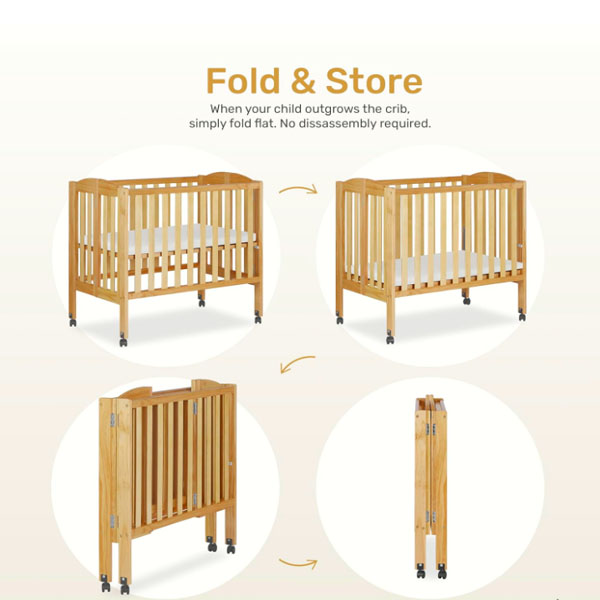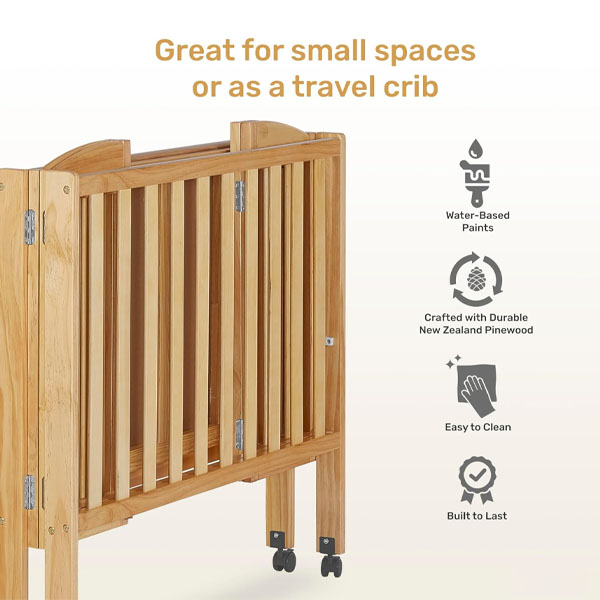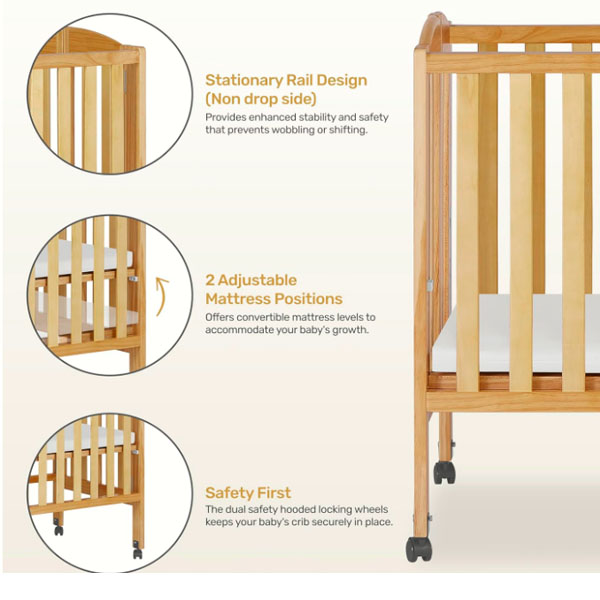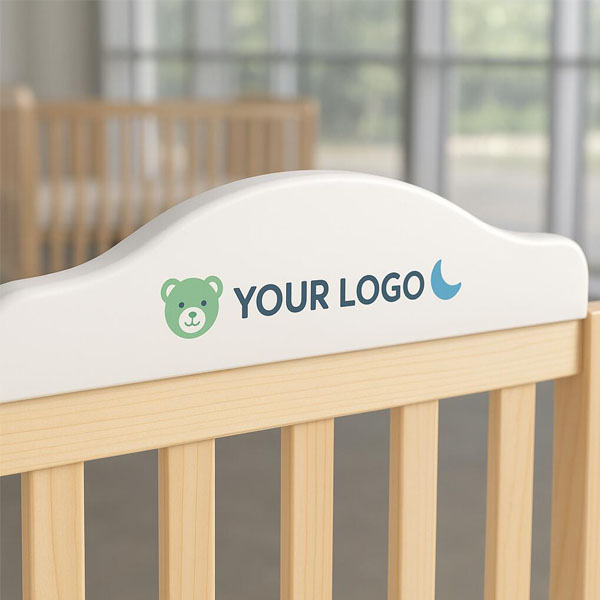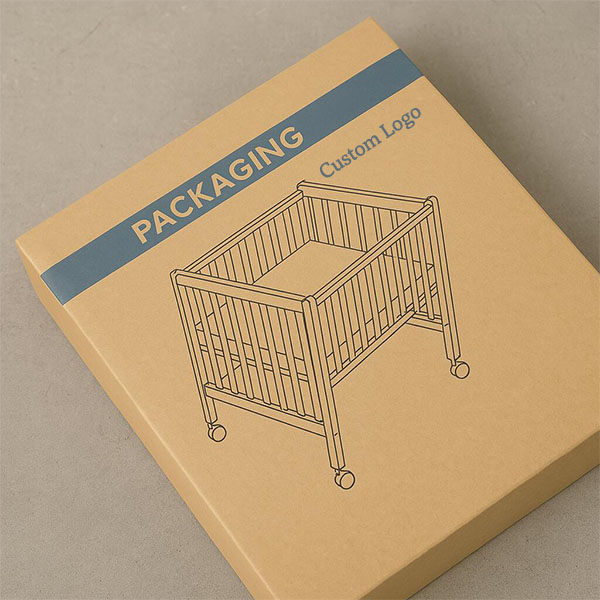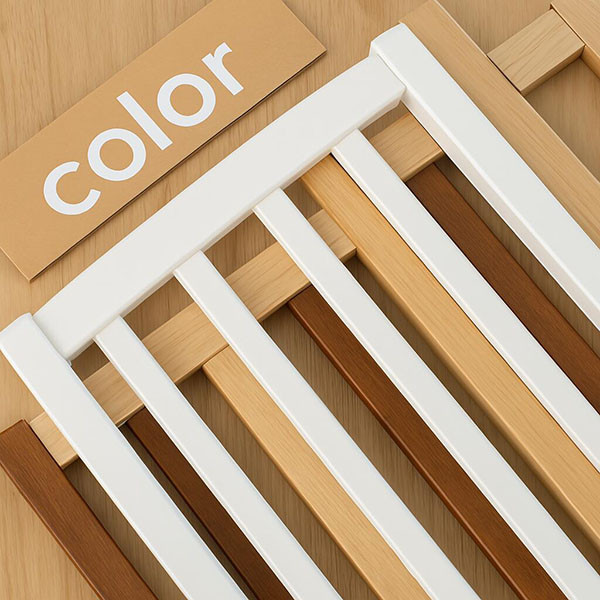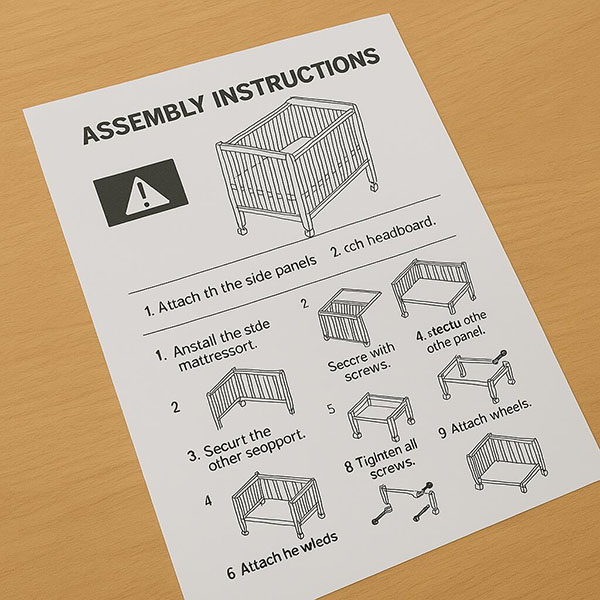How do I know what crib to buy?
Choosing a crib feels like the first big test of parenthood. The number of styles, materials, and claims is overwhelming, and you’re worried about making a choice that isn’t perfectly safe.
To know what crib to buy, start with safety. Ensure it meets current CPSC standards and is JPMA certified. Then, consider a convertible design for long-term value, a material like solid wood for durability, and a size that fits your home.
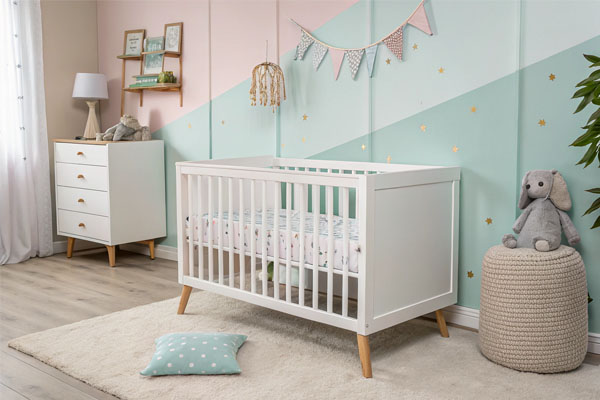
I see this choice paralyze parents and even professional buyers. The truth is, a good crib is more than just a single feature. It’s a complete package of proven safety, quality materials, and smart design that adapts to your life. The market has shifted. Today, parents are looking for an investment in long-term safety and a piece of furniture that grows with their family. This guide is built from my experience manufacturing these products, helping you ask the right questions to find the perfect crib.
What are the best brands for cribs?
You see dozens of brand names online and in stores. It’s impossible to know which ones represent real quality and which are just spending a lot on advertising.
The best brands are those with a proven track record of safety, transparency, and certifications like JPMA and Greenguard Gold. Look for names like Babyletto, DaVinci, Graco, or Million Dollar Baby that consistently perform well in third-party testing.
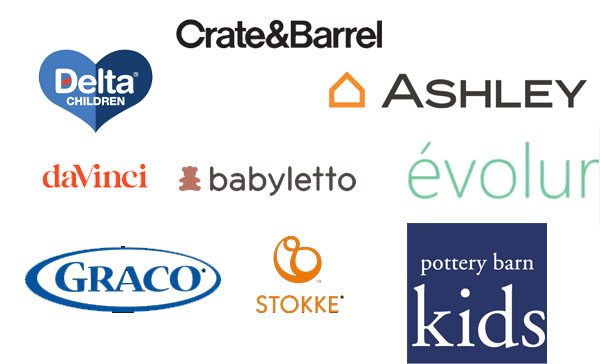
As a manufacturer, I don’t endorse specific brands, but I can tell you what makes a brand good from the inside. It’s not the name on the box; it’s the commitment to quality they demand from a supplier like me. When a brand asks me for the highest level of material testing and documentation, I know they’re serious.
What defines a great crib brand?
- Unquestionable Safety: They don’t just meet the minimum CPSC standards; they go further by getting voluntary JPMA certification and Greenguard Gold certification for low chemical emissions. This shows a deep commitment to your baby’s health.
- Material Honesty: A good brand will tell you exactly what their crib is made of, for example, "100% solid New Zealand Pine wood." They are proud of their materials and transparent about their non-toxic finishing process.
- Long-Term Support: They design their cribs to last, offering conversion kits and having a responsive customer service team. This shows they stand behind their product’s entire lifecycle, not just until it’s sold.
What is the best wood for cribs?
The product description simply says "wood." You worry if it’s a soft wood that will dent easily or an engineered wood that could contain harmful glues.
The best woods for cribs are durable hardwoods like beech, birch, and oak. However, sustainable softwoods like New Zealand Pine are also an excellent and very popular choice due to their strength, eco-friendly nature, and smooth finish.
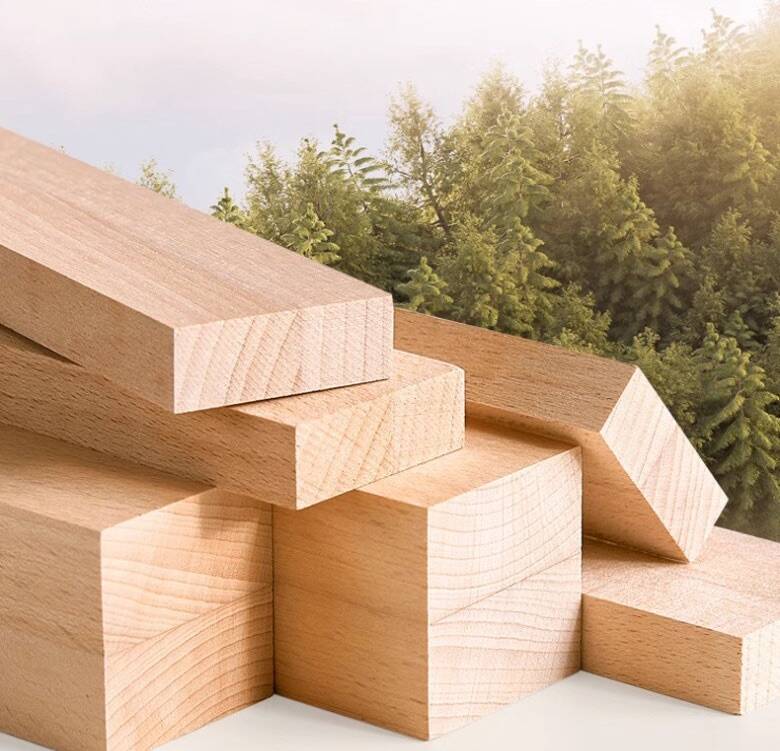
In my factory, we specialize in New Zealand Pine, and for good reason. It hits the perfect balance of what modern, eco-conscious parents and quality-focused brands are looking for. While very dense hardwoods like oak are fantastic, they are also heavier and more expensive.
Why New Zealand Pine is a Great Choice
It’s a sustainable, fast-growing wood, which is a huge factor for families concerned about environmental impact. Its uniform texture and straight grain allow us to manufacture a final product that is incredibly smooth, with no risk of splinters. We can easily shape it to create the beautiful, modern designs that are in demand. Most importantly, it is more than strong enough to pass all the rigorous structural integrity tests required for CPSC and JPMA certification. Always look for "solid wood" for the main frame and avoid cribs where structural parts are made from MDF or particleboard.
Do wooden cribs expire?
You notice a date of manufacture on the crib label. It makes you wonder if, like a car seat, a crib has a hidden expiration date you need to worry about.
No, a well-made wooden crib does not technically "expire." However, its safety becomes compromised if it is damaged, has missing parts, or if safety standards have changed so much that its design (like old drop-side models) is now considered dangerous.
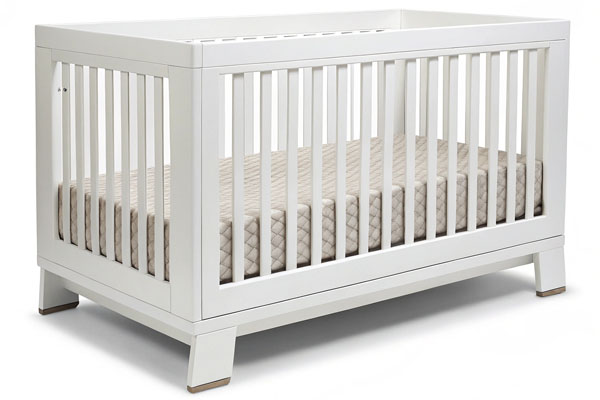
This question gets to the heart of "long-term value." The wood itself will last for decades, but the crib’s safety is what matters. A crib’s safe-use life ends for two main reasons.
First is physical damage. Over time, if a crib is moved frequently or stored improperly, hardware can loosen, and wood can crack. It’s essential to regularly check that all bolts are tight and that there are no structural weaknesses.
Second, and more importantly, is outdated standards. The best example is the 2011 U.S. ban on drop-side cribs. A crib made in 2010 might be in perfect physical condition, but its design is now illegal and known to be unsafe. When buying used, I always tell people to find a model manufactured well after 2011 and check that it has all its original hardware and instructions. This is why buying new provides guaranteed compliance and ultimate peace of mind.
What age to no longer use a crib?
Your child is growing so quickly. You’re not sure about the right time to transition them to a bed, and you worry about moving them too soon or too late.
You should stop using a crib when your child begins to try climbing out, regardless of age. As a general guideline, also make the switch when they reach 35 inches in height, or when the top rail is below their chest level.

The decision to move out of the crib is a safety decision, not a developmental milestone to be rushed. The single most important sign to watch for is attempted climbing. A fall from a crib can cause serious injury, so this is a non-negotiable reason to transition immediately.
Key signs for transition:
- Climbing: The moment you see them hook a leg over the rail, it’s time to move.
- Height: The 35-inch (89 cm) mark is a standard guideline. A more practical rule is what I call the "chest-line rule." If your child is standing and the top of the rail is at or below their chest/nipple line, they have enough leverage to pull themselves over.
This is where a convertible crib shows its incredible value. The transition to a toddler bed is less intimidating for a child because it’s still their familiar bed, just with one side removed. This seamless change is a feature that embodies the "long-term thinking" modern parents value.
How do I sanitize a wooden crib?
Babies are messy, and they put their mouths on everything. You need to keep the crib clean, but you’re afraid harsh chemicals will damage the wood or be toxic for your baby.
To safely sanitize a wooden crib, use a gentle cleaning solution like mild soap and warm water or a 50/50 mix of white vinegar and water. Wipe with a soft cloth, rinse with a clean damp cloth, and dry the wood thoroughly.
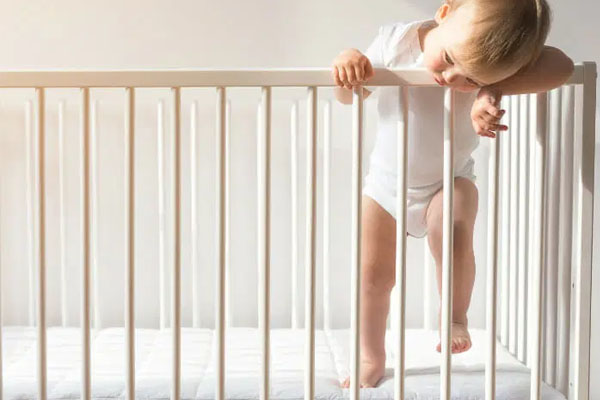
We know that cribs need to be cleaned constantly, so we use multi-layer, non-toxic finishes that are durable enough to withstand regular wiping. The key is to be effective without being destructive. Harsh, abrasive cleaners or chemical solvents can strip the protective finish off the wood, making it vulnerable to damage and defeating the purpose of the non-toxic coating in the first place. You should also never saturate the wood with water, as it can cause the wood to swell or warp over time. A simple, gentle wipe-down is all that’s needed to keep the crib safe and hygienic.
Can you paint a wooden crib?
You found a used crib that needs a refresh, or you just want a custom color. A DIY paint job sounds fun, but you are rightly terrified of using a paint that’s unsafe.
Yes, you can paint a wooden crib, but it is critical that you use a paint specifically labeled as non-toxic and "safe for children’s furniture," with zero VOCs (Volatile Organic Compounds). Proper prep and, most importantly, full curing time are essential for safety.
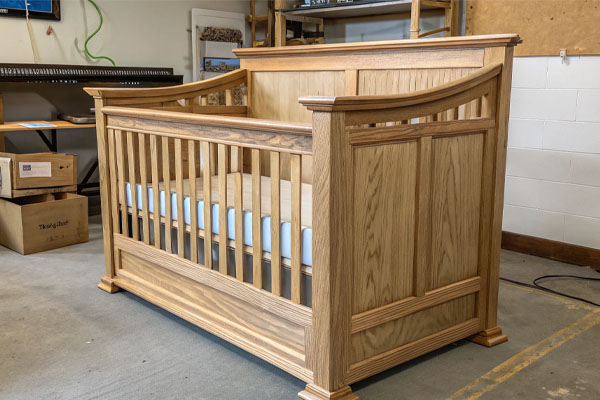
This is a project you must do correctly or not at all. A baby will inevitably chew on the crib rail, so the paint becomes part of the safety system.
Steps for Safely Painting a Crib:
- Choose Safe Paint: Look for water-based paint with "zero-VOC" on the label. Some paints are even certified "ASTM F963 compliant," meaning they are tested to the same standard as children’s toys.
- Prep Work: Lightly sand the entire crib to scuff up the old finish. This helps the new paint stick. Clean off all dust with a damp cloth afterward.
- Paint and Cure: Apply thin, even coats of paint. The most important step is allowing the paint to fully cure, not just dry. Drying is when the water evaporates. Curing is when the paint molecules fully bond and Harden. This can take 7 to 30 days. The crib must be left in a well-ventilated area until it is fully cured and no longer smells of paint.
What not to put in a crib?
You want to make the crib a soft, cozy haven. But the safety warnings about SIDS are everywhere, making you unsure what is a comfort item versus what is a hazard.
The safest crib is an empty crib. For safe sleep, the only things inside should be a firm mattress and a tight-fitting fitted sheet. Do not add pillows, blankets, bumpers, stuffed animals, or positioners, as they are all suffocation risks.

This is the most important safety rule, promoted by the American Academy of Pediatrics and all safety experts. I am very direct about this with the brands I work with. The beautiful photos you see online with fluffy blankets and cute stuffed animals are for staging only, not for actual sleep. My responsibility is to build a safe container. The parent’s responsibility is to keep that container clear. Instead of a blanket, use a wearable blanket or sleep sack to keep your baby warm. It provides the comfort of a blanket without the risk. The "bare is best" approach is not just a guideline; it’s a life-saving practice.
A few other questions you asked me.
How to stop a baby from chewing on a wood crib?
The best way is to attach crib rail covers or guards. These are made from non-toxic fabric or food-grade silicone, giving your baby a safe surface to chew on that protects their gums and the crib’s finish.
Should I get a metal or wood crib?
Both are safe if they meet modern standards. Wood offers a classic, warm feel and is almost always convertible. Metal provides a modern or vintage look and is easy to clean but is less likely to be convertible. The choice is about your personal style and long-term goals.
What kind of cribs do hotels use?
Hotels use commercial-grade cribs. These are built for durability and easy sanitization, often made from steel or foldable wood models with heavy-duty hardware. They prioritize function and safety over aesthetics.
Conclusion
Knowing what crib to buy means looking at the big picture: certified safety, quality materials like solid wood, brand trustworthiness, and how it will serve your family long-term.




